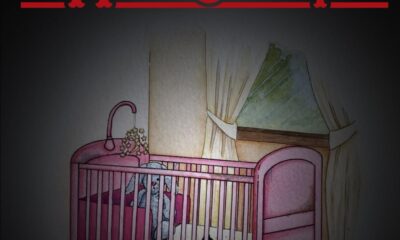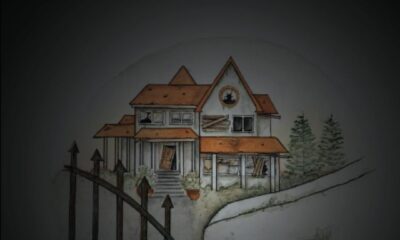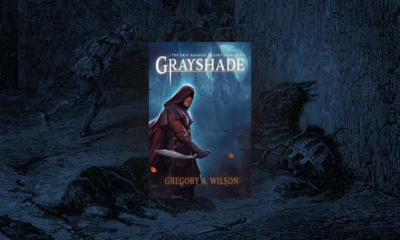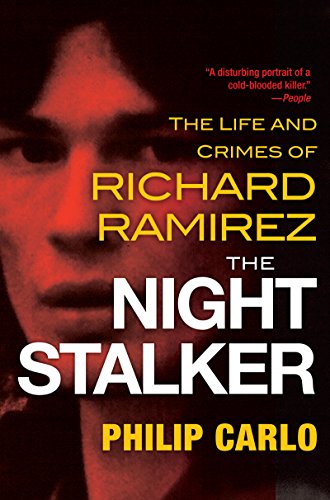
True Crime Studies: Philip Carlo’s ‘The Night Stalker’ is graphic nightmare fuel
More Videos
Published
3 years agoon
By
Rachel Roth
Someone once asked Richard Ramirez how to avoid being targeted by a serial killer. His answer: “You can’t. Once they are focused on you, have you where you are vulnerable, you’re all theirs (…) When you drop your guard — that’s when the serial killer moves.” He would know after all, he did kill an estimated 14 people and stalked an entire city for over a year, throwing the state of California into total chaos.
He was the embodiment of Wrath, as if his body had been emptied of blood and organs and replaced with boiling steam. His very existance had people convinced that the Devil was living among them, including Ramirez himself who claimed to not only be a Satanist, but a devoted servant of Lucifer with big dreams of spending eternity by his overlord’s side.
What I’m saying is, he was a delusional, twisted sexual deviant that scared the crap out of a lot of people. He also had an embarrassingly large number of groupies but we’ll get to that in a minute.
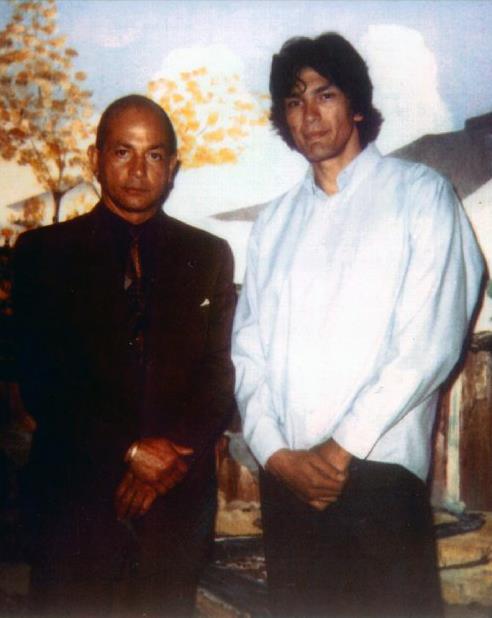
Richard Ramirez, also known as “The Night Stalker,” was a serial killer, robber, and rapist that terrorized the residents of Los Angeles and parts of San Francisco from June 1984 until August 1985.
There have been many books written on Ramirez but, The Night Stalker: The Life and Crimes of Richard Ramirez by Philip Carlo is one of the best true crime biographies I’ve ever had the pleasure of reading. It’s right up there with Dave Cullen’s Columbine for me. Carlo holds nothing back. He describes everything and I mean EVERYTHING. From the violently invasive descriptions of sexual assault to the silly arguments that went down in the courtroom, nothing is left unsaid. The crime scenes are particularly graphic in detail, not much is left for the imagination. You’ll be able to smell the blood, feel the fear, and see the dark sky standing over Ramirez as he approaches his next target. It’s like an awful car wreck, can’t look away no matter how disturbing it is.

The book is split up into five parts (The Hunters and the Hunted, Richie, Capture, The Trial, and Epilogue) with Part One taking place during the bulk of the crime spree leading up to the end of the investigation. The narrative is shared between Ramirez and the police detectives chasing him, Frank Salerno and Gil Carrillo, with each of their individual points of view evenly distributed throughout. An interesting detail about Part One is that Ramirez is never mentioned by name. He is referred to only as “the killer” until the police actually identify him. This withholding of identification is both a narrative technique and also a way to dehumanize him, portray him as more of a force than an actual man.
It makes the book very psychological. Inserting you within the investigation so that you feel like you’re working alongside Salerno and Carrillo as they track the killer’s movements.
The Ramirez family
A Horror Story All its Own
Once we’ve removed the mask, we learn how the monster was made, only it’s a tragedy. The beginnings of the Night Stalker and the entire Ramirez family is a great big tragedy.
“My brother never slept. He was always up and moving around at night.”Ruth Ramirez
Carlo goes all the way back to Richard’s grandparents, tracing the line of violent temperament through the Ramirez bloodline. His father, Julian, was regularly abused by his own father and grandfather, becoming permanently solemn and resentful by his teenage years. He would spend the rest of his life fighting this resentment.

He meets and marries a woman named Mercedes, and together they have a total of five children. All but one would be born with behavioral issues, learning disabilities, or physical defects. Their first four children, Ruben, Joseph, Robert, and Ruth were conceived and born while the family was living near a nuclear testing site in Los Alamos. An area where many children were born with birth defects and behavioral issues.
By the time Mercedes was pregnant with Richard, the family had moved to El Paso where she had taken a job at the Tony Lama boot factory. There she worked with toxic chemicals to improve pigmentation in shoe coloring, toxins that were later linked to severe birth defects. It is widely believed that Richard, who suffered from epilepsy, was harmfully affected by these chemicals while in the womb. His epilepsy would ultimately cause damage to his temporal lobe, the part of the brain largely responsible for handling emotion. Damage to the temporal lobe has been known to cause hypersexuality, sexual aggression, and just aggression in general. He would later be diagnosed with a schizoid personality disorder.
Richard’s fate, however, was only sealed once he started hanging out with his older cousin Miguel.
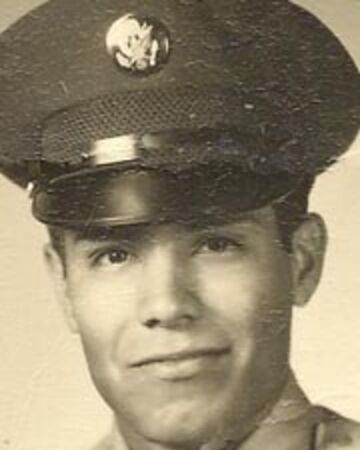
Miguel was a Vietnam veteran who was a twisted, savage human being. Having killed and raped many people overseas, he would often brag about his many conquests, actually showing Richard pictures of the women he sexually assaulted and then murdered. The pictures were often taken mid-act so they were basically torture porn snuff images. Their get-togethers were cut short when Miguel murdered his wife Jessie right in front of little Richard.
Many who’ve studied Ramirez put a lot of the blame onto Miguel who they believe twisted the young man’s already troubled mind. Psychiatrist Michael H. Stone described Ramirez as a ‘made’ psychopath rather than a ‘born’ psychopath and Miguel likely had something to do with that.
“That day I went back to the apartment, it was like some kind of mystical experience. It was all quiet and still in there. You could smell the dried blood. Particles of dust just seemed to hover in the air. I looked at the place where Jessie had fallen and died, and I got this kind of tingly feeling. It was the strangest thing. Then my father told me to look in her pocketbook for this jewelry my cousin wanted, and I dumped Jessie’s pocketbook on the bed and looked through her things. It gave me the weirdest feeling — I mean, I knew her, and these were her things and she was dead. Murdered. Gone. And I was touching her things. It made me feel…in contact with her.”Richard Ramirez, The Night Stalker
Trial for the ages
The next big chunk of the book is the trial but I hate reading about court cases so this part was a bit of a bore for me. Carlo still manages to make it interesting though. The whole thing was crazier than an ill-planned circus act. It covers everything from start to finish so that you come away with a full picture of what happened, that if anything, highlights how the judicial system is just as messy, boringly chaotic, and confusing as a busy call center. It’s not just the trial though. Part Four also deals with public perception and the Ramirez groupies that were crowding around the jailhouse on a daily basis.
*Charlie Kelly voice* Now let’s talk about the groupies. Can we talk about the groupies, please, I’ve been dying to talk about the groupies with you all day!
Groupies
I understand this is a type of disorder but…what the f*** ladies? There were so many women drooling over Ramirez after he was captured that I actually felt ashamed of my gender for a moment.
Hybristophilia is considered a type of sexual disorder that several people, mostly women, experience but in the case of Ramirez, it was a bit more extreme, not to mention embarrassing. Hybristophilia is usually brought on when a woman encounters a violent man and thinks she can “tame” him with her love. These individuals will often find excuses for their partner’s crimes while simultaneously think that they’re special. They enjoy the thought of knowing, or thinking, that their partner has harmed others but will never hurt them.
Carlo spends a lot of time with Ramirez’s female admirers and, even though these women are clearly troubled, they make such fools of themselves that you’ll just want to b***h slap them, in particular Doreen Lioy and Cindy Haden. They weep and shamelessly salivate over him, all the while admitting that his crimes make them feel uneasy. A lot of these women seemed to believe the misconception that psychopaths are ugly. The shock of Ramirez being attractive was what lured most of them in. None of them would’ve been tearing down Henry Lee Lucas’s door. It’s one of the most infuriating and fascinating sections of this book.
Final Verdict
The Night Stalker doesn’t play the pity card. Carlo isn’t interested in making you feel bad for Ramirez, he just wants to explain how this monster was created, which is what makes the book such a captivating read. It is dark, technical, psychological, and extremely thorough. Carlo evolved the true-crime novel that originated with Truman Capote’s In Cold Blood. It will make you check your windows and doors more than once during the night.

Related posts:
- True Crime Studies: Naming Jack the Ripper by Russell Edwards
- True Crime Studies: A Serial Killer in His Own Words by H.H. Holmes
- Screen Slashers: The real Ghostface killer who inspired the Scream franchise
- True Crime Studies: “A Bird in Your Hand” is probably the borest true crime book I’ve ever read
Rachel Roth is a writer who lives in South Florida. She has a degree in Writing Studies and a Certificate in Creative Writing, her work has appeared in several literary journals and anthologies. @WinterGreenRoth

You may like
Dear readers, the time has come for some answers. At least, that’s what the teaser for the new installment of Monastery says. As usual, it delivers what it promised and more as we untangle the past and its connection to the present. Without any further ado, let’s talk about it, shall we?
Plot
We start the episode with a blast from the past. Cassandra and Celeste (Nicole’s aunt and Arthur’s lover for those with short-term memory) are in the hospital because of Celeste’s pregnancy complications. Cassandra promises her former best friend that she will ruin her all the while we find out Francis’s real parentage. The picture is finally starting to come together.
As we are back in the present day, our group is more scattered than ever. Thomas is his father Walt’s prisoner while David is still running around looking for Rocky. Fred on the other hand is just looking for any place to crash, homelessness and all. Our dethroned beauty queen Nicole is hiding away from everything – including her shame. Last but not least, little Henry is spending his time taking care of Nana Beth. Guessing that is his redemption for trashing all the evidence of Albert’s murder gathered so far. Although frustrating, his actions are understandable – the poor kid is traumatized and just wants some peace.
George Turner’s murder is still an active investigation. It is obvious that this cover-up wasn’t nearly as successful as Albert’s. I sure as hell hope that Francis gets his comeuppance sooner rather than later. Not particularly because Turner didn’t deserve it but so the rest of the characters would be safe from him. Although as I’ve said before, his clear descent into sociopathic tendencies is kind of fascinating to watch.
We also get an interesting development in what so far has been a tiny background detail, which is the Monastery Werewolf. As the creature comes to visit Rocky, we find out our resident star dog considers it family. Not going to lie, it took me a few reads to understand what this means. Now I’m getting all sorts of ideas as to how the supernatural ties into the rest of the story.
Speaking of the supernatural, it is none other than Madame Witch who frees Thomas from his captivity. Well, her contribution is indirect as she sends his best friend Alfie to help instead. Although I’d say currently the two should set their dynamic status to ‘it’s complicated’. As soon as he’s free, Thomas is immediately back in his detective mode. For arguably the first time he gets some real answers as we find out the whole backstory of Albert/Celeste/Cassandra triangle. I won’t go into details as that trio deserve their own article but let’s just say it gives Cassandra a big ass motive for killing her husband. Not to mention the way she took Francis from Celeste was quite brutal to read.
We reach the lead-on for the grand finale as David and Henry are coming to free Rocky. This naturally comes with a condition – they must hand Francis the key they found during the investigation. Little do they know Nicole is already there being held at gunpoint. Oh, and Fred should also be around somewhere as he was sleeping there the night before. Thomas might be a little late to the party since he and Alfie are held a knifepoint by Rick (seems like a running theme here). Nothing good can come from this.
Overall thoughts
This episode does a perfect job of setting up the big finale. It reveals everything we need to know except the main question – who killed Albert? At this point, while it of course still matters, this story is so much more than that. It’s about all the mess that this family has got themselves into, how with each mistake they kept digging deeper, and how it took a whole new generation for all of that to come up to the surface. I can only hope our investigative gang will make it out alive…

More thoughts from the author:
1. Although a minor character in comparison, Walt strikes me as someone who’s there to represent the themes of Monastery – someone who will do horrible things in the name of family. What was your intention with his characterisation, especially considering he works for justice (aka the police?)
This is why I will always defend my decision to have a large cast, as opposed to most books – when you get even the slightest sense of fleshing out a minor character, it feels so rewarding. Walt, to me, takes the crown of “father of the year”, even if he does it by locking his son up in the bedroom. He is protecting his wife’s secret, protecting his son’s innocence, and doing so by going against his core ideals – i.e., a detective covering up a murder. He’s also based on a favourite uncle of mine, so it makes me happy to give him his moment to shine.
2. Something I thought of while writing this review – the cover up of George Turner’s murder seems to be a kind of juxtaposition as to how neatly Albert’s was since the police keep discovering evidence left and right (and how Francis doesn’t particularly seem to care). Was this intentional on your part?
It all adds up to plot convenience, and I have no shame in admitting that – Albert’s murder was so neatly covered up because I needed it to go unsolved for 14 years, whereas the reader knows who killed George, so there is no need for the cover-up to be well done.
As for Francis’ reaction to the murder, he started out anxious and paranoid after the fact, but he has grown into a state of not caring, which further depicts his descent into darkness – he knows he’s close to his goal (of finding the money and leaving his family), so there is a sense of invincibility taking over. He is stepping into his main villain energy and we are here for it!
3. Alfie has been yet another background character until now and yet he is the one who rescues Thomas. To me he seems like the friend who genuinely cares for Thomas and who gives him that reality check he sometimes needs to get out of his own head. Was that at least partially why you chose to bring him in for the grand finale?
Fun fact: Alfie was originally a series regular. However, halfway through writing the series, I realised I wasn’t using him as much as I’d wanted to, so I bumped him down to recurring. But the original plan always saw him and the other regulars coming together for the big climax, which is why he is in the fold. Alfie is someone who keeps Thomas grounded (if not humbled), since Thomas has the slight tendency to, well, think he’s better than everyone else. What’s coming up for them is one of the most exciting things I’ve ever written about.
4. Lastly, it’s not so much a question but rather a well done for how you crafted the Albert-Celeste-Cassandra dynamic! I was very invested despite knowing the outcome. Weirdly enough, while hating Cassandra for how she handled it, I sort of understood why she thought that Celeste deserved it? Either way, congrats for managing to craft these love stories in the midst of all the murdery goodness.
Thank you so much. As I’ve said before, romance is not my strong suit, but I do love a soapy triangle – and if it ends with gun violence, even better! The reveal of this mystery is probably my favourite sequence in the series so far.
The evils lurking Los Angeles are unveiled in CJ Leede’s 2023 debut novel, Maeve Fly. The novel is a gruesome love letter and ode to Los Angeles and horror icons, centering on the titular character, Maeve Fly. She is, in short, a Disney Princess and serial killer.
Below the Depths of Anaheim
By day, Maeve Fly works as a princess in “the park.” It is is never named, but obviously Disneyland as depicted by Maeve’s vibrant descriptions of the princesses, furry costumed animals, and movie-themed rides. She plays a Scandinavian princess (Elsa) and genuinely loves the job and her coworker, Kate. In her personal life, Maeve tends to her sick, comatose grandmother, former starlet Tallulah, and her grandmother’s cat.
Maeve has an ordinary personal life, including going out with Kate and takes biweekly, afternoon trips to a Tiki bar in which she, a man who may or may not be Johnny Depp, and the bartender are the only patrons. Her interests include the macabre and all things horror and Los Angeles history, her love for the city a central theme throughout the novel. When Maeve meets Kate’s brother, Gideon, Maeve’s sense of self unravels.
Mirroring Fiction
The problem with Maeve’s sense of self, however, is that she has no idea who she really is. She adopts the personalities of literary characters, from Dostoevsky’s Notes from Underground narrator to those in James, Kant and Milton novels.
Maeve is selfish, antagonistic, and very selective of the people she lets in her life. She is an unreliable narrator with an unpredictable temper and ultraviolent tendencies.
Leede’s prose and writing of Maeve invites a new narrative to the genre. Maeve is persistent in her disgust with how often villains need a tragic backstory as excuse for their monstrous behavior, especially when the villains are women. Leede dismantles that trope and provides Maeve with no reason for her treacherous behavior. It is simply who Maeve is.
An Ode to Horror
Maeve Fly is everything I love in a horror story. It is an unpredictable slasher with comedy and heart. Leede has displayed her talent for writing horror. She has created a story that pays its dues to the genre’s long iconic history — one example is the references to Pyscho or American Psycho — but is wholly unique in it’s own form. From captivating dialogue to visceral depictions of horror history and Los Angeles’ sites, like the La Brea Tar Pits, the novel sucks you in until the very last, bone chilling sentence.

Released in August of last year, Mister Magic is written by author Kiersten White. And I’m going to give you the warning that I wish I’d have had when I started reading it.
This book deals largely with the systemic issues prevalent in the Church of Jesus Christ of Latter-Day Saints. While there are no overt discussions or descriptions of child abuse, I would argue that it’s alluded to.
In the interest of full disclosure, White lets us know in the acknowledgments that she was raised Mormon and is not anymore. I was also raised Mormon and am not anymore. And this book wrecked me.
The story
Our story begins with a young woman named Val. She’s been living with her father on an off-the-grid farm for most of her life.
When he dies, a mysterious stranger shows up at his funeral. This man, named Marcus, seems to know her right away. She knows him as well, though she doesn’t seem to remember why.
Eventually, he explains that she was on a children’s TV show called Mister Magic. A show that she has no memory of at all.
And this makes sense because there is little to no evidence online that the show exists. There are no clips, no scripts, no cast lists. It’s as if the show vanished entirely when the last episode aired.
Oh, and during that last episode, a kid probably died.
Desperate to remember her childhood and maybe even reconnect with her mother, Val leaves with her former cast mates for a reunion and podcast taping.
As the Circle of Friends reforms, fans of the show online rejoice. If the cast is getting back together, it must mean Mister Magic is coming back.
And that’s exactly what the mysterious creators have in mind.
What worked
This book shows a world that is all but impossible to describe from the outside. Long before I realized this book was an allegory for Mormonism, I was catching signs. It felt familiar.
Everyone was a little too nice. Everyone seemed to be holding back a little. Everyone seemed eager to do things for other people, almost like they felt like they had to justify their presence.
I also appreciated that we talked about child abuse without talking about child abuse. Through the book, we learn that one member of the cast, Kitty, is missing. Her disappearance heralded the end of the show, but no one wanted to talk about what happened to her.
This, I thought, was a subtle and brilliant way to talk about abuse without having to go into upsetting details. And in not adding these details, White leaves us to invent them ourselves. Which is always worse.
Sometimes it’s the notes you don’t play that make the biggest impression.
To that same end, there is no real gore in this book. No charred bodies, no blood. No gruesome scenes at all. But I feel like that was intentional. I’ll also point out that in reading other reviews for the book, I noticed that others criticized the character for being rather bland and one-dimensional. Both of those things are likely on purpose, and part of proving a point.
In the book, each character remembers Mister Magic pulling them back. He taught them the habit of dulling themselves down. Don’t paint in such a wild manner. Don’t shout so loud. Don’t stray too far.
Don’t draw attention to yourself. Don’t be different.
In the end, Mister Magic managed to do exactly what the very best horror does. It took a real horror that most people do not experience and turned it into a metaphor that everyone can understand. And it doesn’t have to be just former Latter Day Saints members. All survivors of religious abuse will see themselves in this. But we’ll also see all the other lost children, trapped with Mister Magic, and realize we are not alone.

If you’re a fan of my work, please check out my latest story, Nova, on Paper Beats World. New chapters launch every Monday, Wednesday, and Friday.

